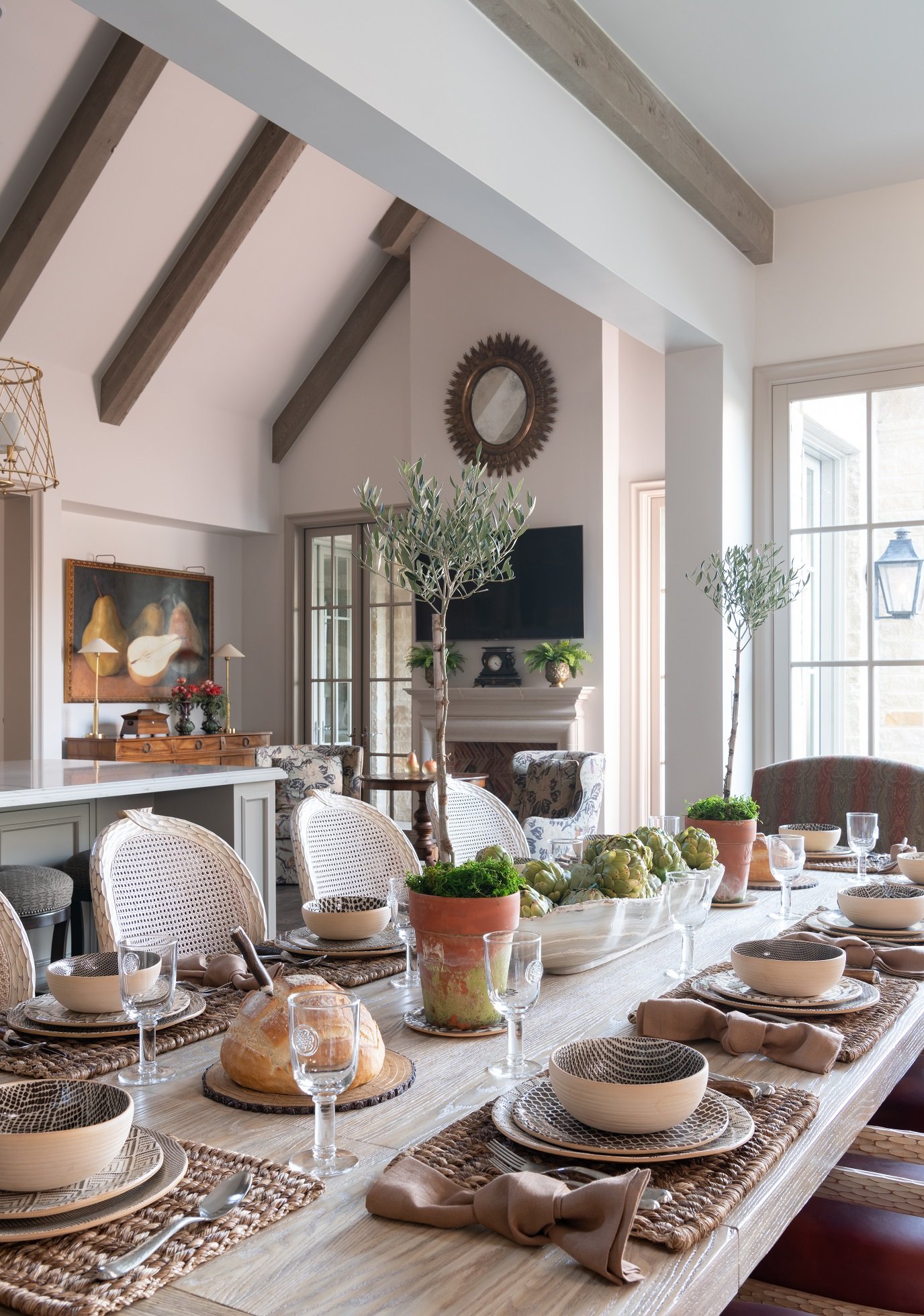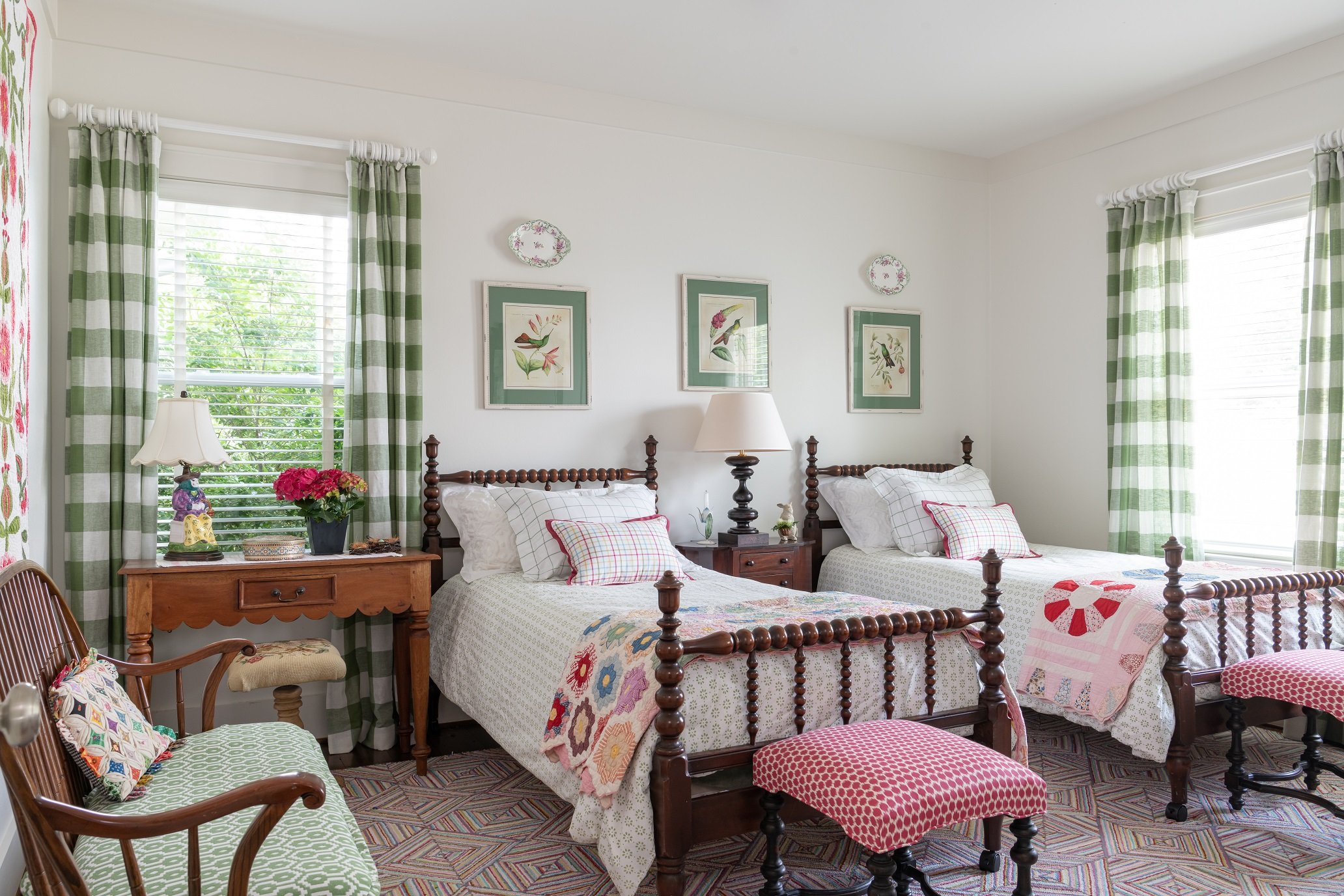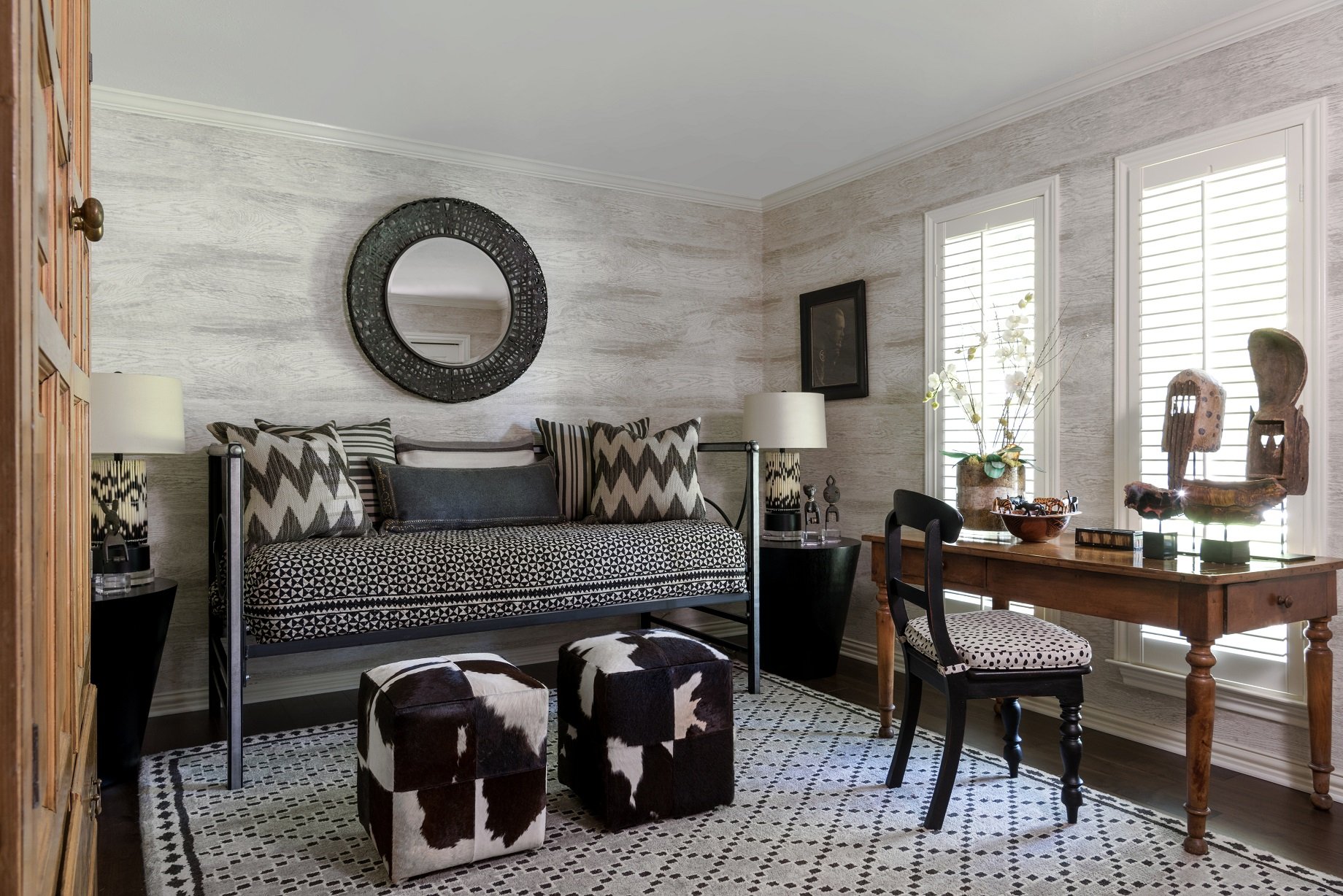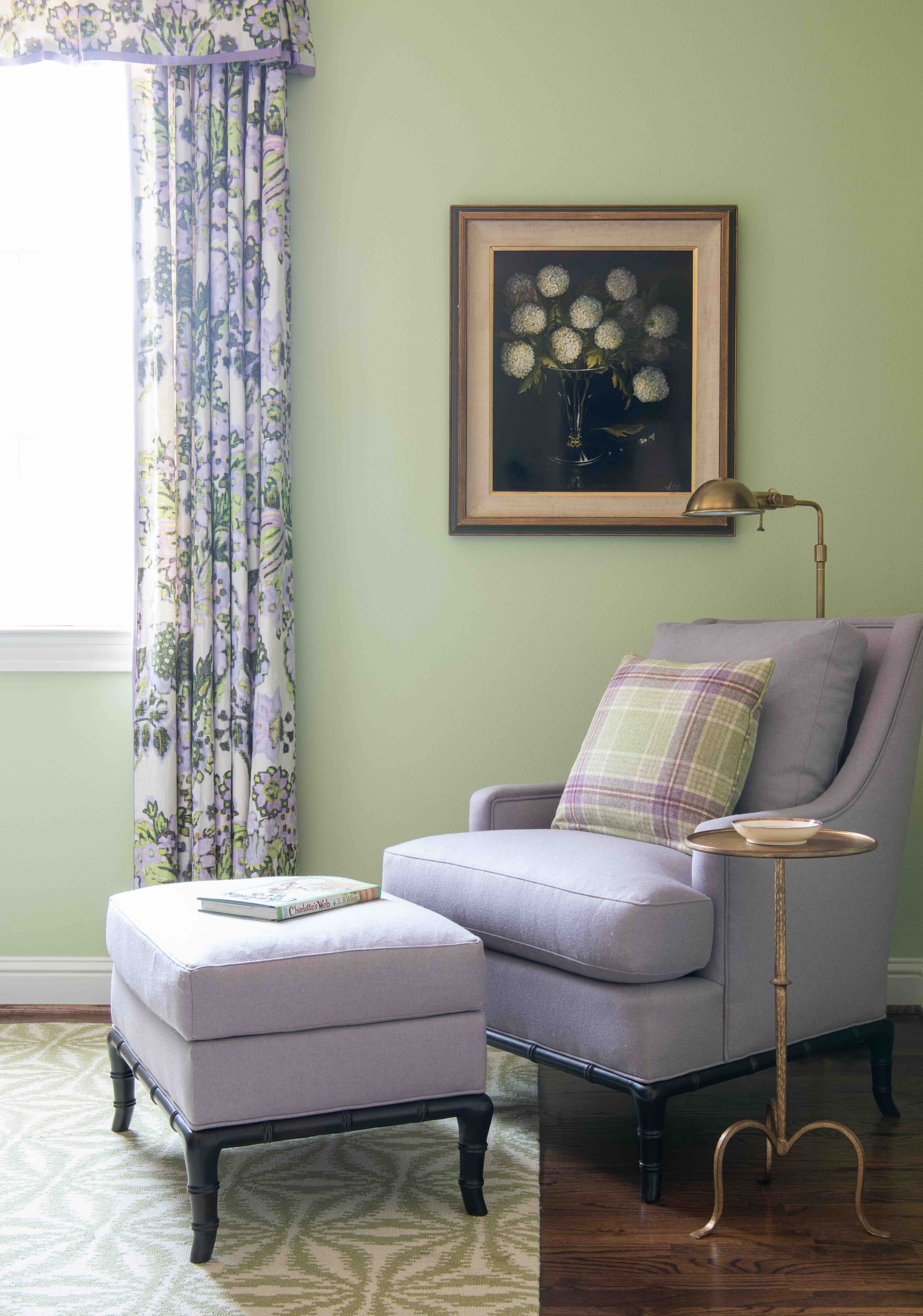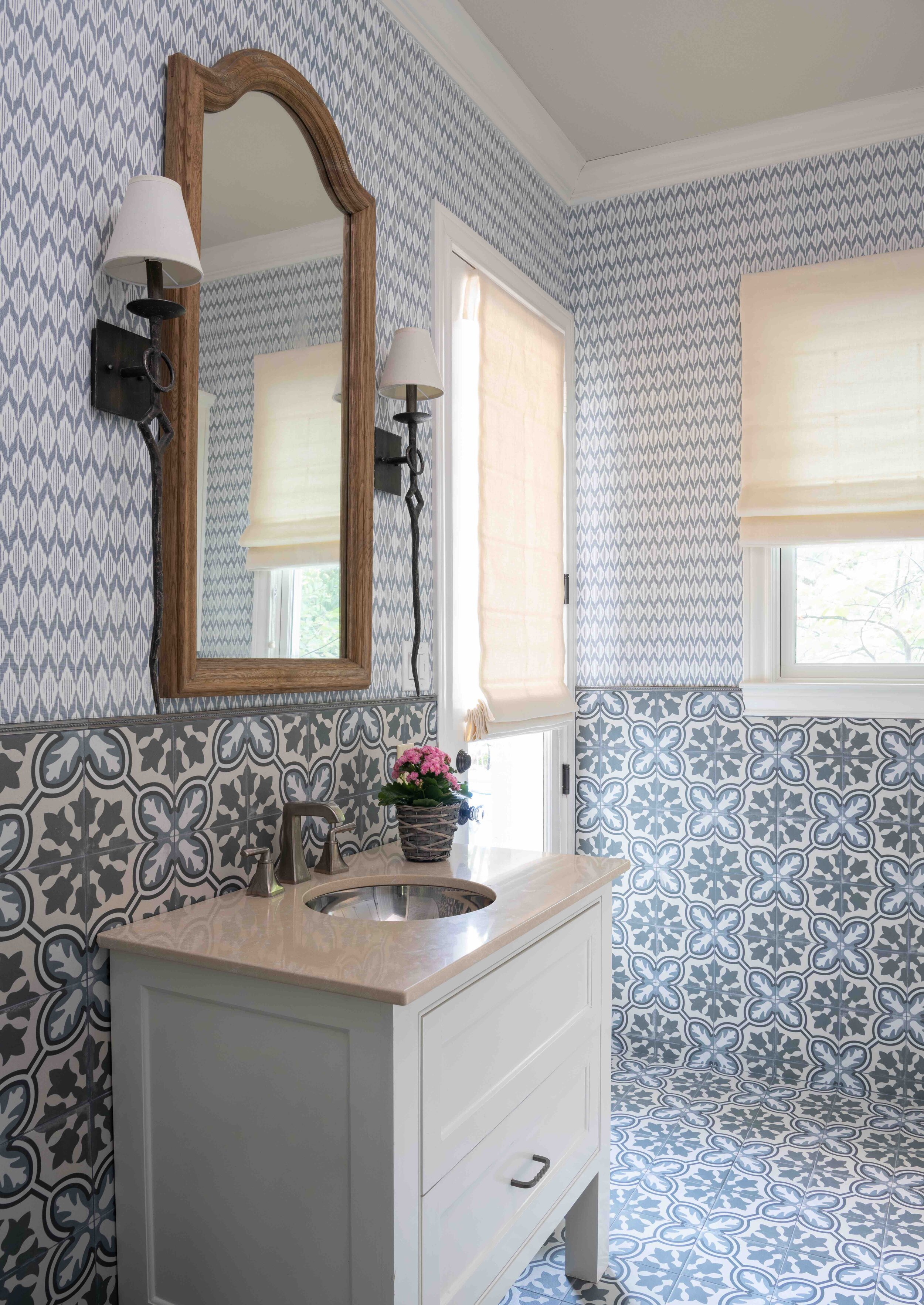English style can work with both warm or cool colors. Pink adds a whimsical touch to this English cottage we designed.
English style has been making a comeback lately. If I had to make a guess as to why, I think it’s because English furniture is a little bit simpler than French or Italian style furniture. It mixes really well with a modern home.
If you’re drawn to English style but are worried that incorporating it will date your interior design, you’ll be glad to know that an English-inspired home can still look very current. In this article, I’ll give an overview of the key characteristics of English style and how I’ve been using English furniture and accessories successfully in my own design projects.
Traditional English homes, whether they are cottages or manors, tend to be comfortable, warm, and inviting. The color schemes are classic and understated rather than bold and vibrant. For example, these colors can include rust red, robin’s egg blue, pale green, pink, or gray. The flooring in an English home is usually wood with rugs over it, especially oriental or sisal rugs. The window treatments could be drapes, curtains, or shades, but never blinds.
Even a relatively modern or transitional English style home should be layered with antiques or traditional art to give the home a sense of history. That said, most designers are not using as many antiques as we did ten or twenty years ago. Back then, I would occasionally do entire rooms in English style, but nowadays, I use English antiques as more of an accent, scattering them throughout the home.
Another way to help an English-inspired room feel more current is to choose contemporary colors and simple draperies. For example, in one project with English antiques I used an aqua paint color to make the room feel fresh.
Aqua paint helps this English antique-filled dining room seem light and airy as opposed to dark and dated.
If you don’t already own English antique furniture, you’ll definitely want to brush up on the different periods of furniture making, such as the Tudor, Georgian, or Edwardian periods. Thomas Chippendale is the most famous English furniture maker: anything that was originally made in his workshop belongs in a museum today.
English furniture is usually made with very dark wood, such as mahogany, and has less carving than French or Italian pieces. Another interesting thing to know is that the English liked as many reflective surfaces in their homes as possible to brighten things up. As a result, they used shiny finishes on both their wood furniture and their hardware, with the hardware often finished in shiny brass.
English antiques are often made of dark woods with shiny finishes, like these in a University Park home we designed.
An easy way to capture the ‘English look’ is to learn about iconic furniture designs from England and incorporate them into your rooms. Some of these “staple” pieces include the Windsor chair, the Queen Anne chair, and the Chesterfield sofa. Four-poster beds with heavy drapes were traditionally used in English homes to insulate against the night chill.
I would also encourage anyone serious about English antiques to see collections in person if they can. Here in Dallas, the DMA has a whole wing of fine pieces of American furniture. American furniture is worth looking at as well: American and English antique furniture are so similar to each other that it can take an expert to distinguish the two. Another large collection of American furniture is in the Winterthur Museum in Delaware.
As far as accessories go, the English liked to use chinoiserie. Europeans in general have long been fascinated with Asian porcelains. Other accessories commonly seen in the traditional English home include needlepoint pillows, antique clocks, and oil paintings of family portraits, dogs, or horses.
Traditional paintings featuring dogs and horses, especially in hunting scenes, are classic English style.
Even if full-blown English interiors are considered outdated by some today, I still love to work with English furnishings and antiques. Balancing them with a modern or contemporary interior is a fun and rewarding challenge.
An interior designer like myself, especially one well-versed in European antiques, can be a valuable partner in both sourcing the antiques and figuring out the best way to use them in your home. To schedule a free consultation with us, send an email to info@chambersinteriors.com or call our Dallas office at 214-651-7665.












